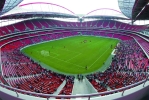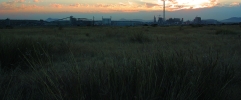

State-of-the-art fire detection sensors must be able to detect dangerous smoke and heat generations as early as possible and dependably alert people in the danger zone and the fire brigade via a reliable communication channel. At the same time, safety measures preventing false alarms caused by deceptive environmental phenomena or disturbances are just as important.
A safe environment and trouble-free work processes are essential prerequisites for people and companies. Danger to people and assets due to fire, or even smallest disturbances or interruptions are decisive experiences that may have unexpected economical consequences. For many decades, Siemens has conducted intensive research in fire protection, providing solutions for the protection of people and infrastructures. With the new Sinteso product range, Siemens offers a fire detection system ensuring reliable protection in all application areas, combined with high profitability as regards expandability and long-term system operation. The latest development from Siemens' business field Building Technologies is the Sinteso fire detection system. The new detector family consists of the S-Line for sophisticated applications, and the C-Line for standard applications. Both lines include a neural fire detector, a wide spectrum smoke detector and a heat detector. The range is complemented by flame detectors, air sampling smoke detection systems, linear smoke detectors and accessories such as signal transmitters, manual call points or detector testers.
With the new, patented ASA Technology (advanced signal analysis) the S-Line reaches unparalleled detection reliability, virtually ruling out false alarms caused by deceptive environmental factors such as vapour, exhaust gases or electromagnetic fields. This signal evaluation technology is an advancement of the algorithm technology pioneered by Siemens, ensuring a reliable response behaviour with virtually all types of fire, even under the most difficult conditions. The signals acquired by the sensors are broken down into mathematical components, assessed with the programmed algorithms and then compared with the defaults saved in the detector. By selecting the appropriate ASA parameter set, the algorithms are adjusted and each detector is set up for the expected fire phenomena and environmental influences. Alongside the wide range of parameter sets, ASA Technology convinces because of its realtime interpretation of the situation and the dynamic adjustment of the algorithms, enabling a much more exact assessment of the situation. Typical fields of application are industrial production facilities, clean rooms, parking garages, power plants, etc. The detection reliability is so high that Siemens assumes the costs of any unwanted fire brigade operation caused by a false or unwanted alarm.

The neural multicriteria detector is equipped with two optical and two thermal sensors. The heart of the detector is the opto-electronic measuring chamber, which keeps off disturbing extraneous light while reliably detecting penetrating smoke particles. It is based on a sophisticated labyrinth with two optical sensors, one for forward and one for backward scattering, and two independent temperature sensors. The signals of these four sensors are intelligently compared, analysed and evaluated by ASA Technology. The detector thus ensures optimum response behaviour with all types of fire. In addition, the type of fire aerosols is taken into account in the evaluation. The two optical sensors analyse the aerosols regarding their size and type, and distinguish between light and dark particles. The detector can thus distinguish between eg, harmless water vapour and harmful smoke; a situation often causing false alarms with conventional optical detectors.
Furthermore, the multicriteria detector can be preconfigured to the functional area in account with much higher accuracy. A smouldering fire in a hospital room, or an open fire in a synthetic material storage room, can be detected much earlier and much more reliably by pre-selecting the optimum ASA parameter set.

Free configurable network
Even the best fire detectors can only be as powerful as the communication network that links the periphery to the control unit. The FDnet (field device network) guarantees highest transmission safety and fast communication with the system control unit. The free configuration of the network and the largely free use of topologies such as stub, loop or T-branches enable a flexible and efficient installation. The power supply of all Sinteso periphery elements including signal transmitters is ensured via FDnet. The FD network can be extended up to 3,3 km, at amazingly low cabling costs.
Building Technologies has already successfully launched Sinteso in Germany and Austria and will be introducing this new system step by step in all other EU countries and in Asia/Pacific. The Sinteso detectors are compatible with existing and new Siemens control units and can be largely integrated into existing cable networks. With Sinteso, Building Technologies is offering a future-oriented system that can be easily migrated and that can be safely and economically operated throughout the entire lifecycle of a building, even in case of change of use or extensions.
For more information contact Helmuth Krug, Siemens Building Technologies, 011 652 2628.
© Technews Publishing (Pty) Ltd. | All Rights Reserved.